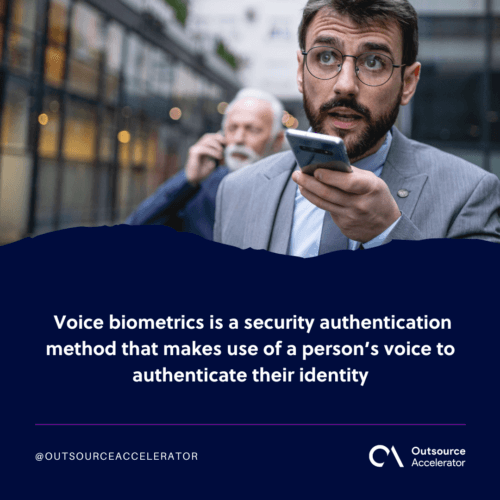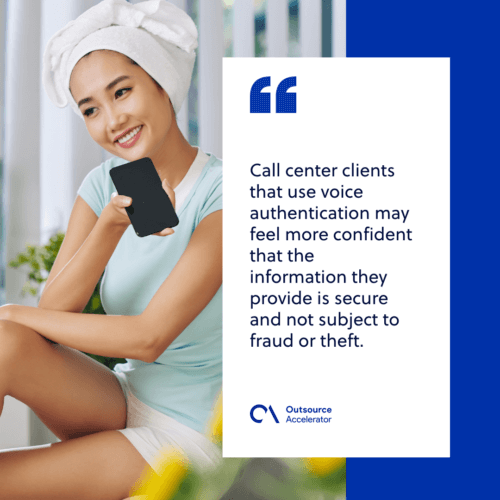Voice biometrics
Definition
What is voice biometrics?
Also called voice recognition, voice biometrics is a security authentication method that makes use of a person’s voice to authenticate their identity. It works similarly to fingerprint and face recognition, where unique vocal features are used to distinguish an individual.
It offers an alternative and more seamless means to access devices and programs, as well as aiding identification in call centers and chatbots.

How does voice biometrics work?
Vocal biometrics identifies the unique features of a human voice, which are closely connected to the physiological aspects of how a person speaks. It uses voice patterns such as pronunciation, emphasis, and accent to create a unique identity for each individual.
These features are extracted by voice biometric systems and saved as a “voiceprint,” similar to having fingerprints recorded.
Rather than recognizing the words spoken, as in speech recognition, voice biometric systems identify who is speaking the words. It compares hundreds of unique vocal features to the voiceprint that was previously saved.
It allows a user to engage with the system using their voice to confirm their identities, which helps to avoid fraud and identity theft.
For consumers, this system represents a significant advancement in terms of security and transparency.
Why do we need voice biometrics?
Voice biometrics is a simple and safe way to verify a speaker’s identification with only a few phrases. This is attainable since everyone has various physical and behavioral traits that impact the sound of their voice, all of which are unique to each individual, just like a fingerprint.
Businesses may use voice biometrics to verify a client’s identification when they call by comparing the current call to a previous one for customer care.
Then, based on how close the match is, consumers can decide whether to complete their request or transaction without requiring additional verification.
Benefits of voice biometrics in call centers
Voice biometric authentication has a wide range of uses, and here are the advantages of using the technology in call centers.
More secure authentication solution
Customers can authenticate their identities using voice biometrics. This gives a better sense of security as they would not be required to provide personal information over the phone.
Call center clients that use voice authentication may feel more confident that the information they provide is secure and not subject to fraud or theft.

Improved customer satisfaction
Every improvement in a call center’s engagement leads to a significant rise in customer satisfaction. The less time spent confirming their identification, the quicker resolution time. And since there are no passwords or logins to accomplish, the fraud risk is also reduced.
Strong omnichannel customer experience
Multiple authentication systems can be replaced with a single biometric system that covers all call center activities. Time and procedure reductions result in significant financial savings.
Further, using the same authentication mechanism across several platforms allows businesses to provide omnichannel customer service more seamlessly.
Phone fraud detection
The best voice biometrics technology can support agents in preventing telephone fraud, in addition to authenticating consumers and confirming their identity.
Agents may get real-time risk assessments for every call they make if they have a reliable voiceprint and biometrics system in place. They can proactively prevent any illegal behavior based on this real-time data.
Shorter average handling times
Customers can connect with agents faster with efficient call center authentication than with a traditional identity check method.
As a result, the verification time is reduced. At the same time, the average handling time it takes for consumers to get a response from the moment they call is reduced significantly.
Happier call center agents
Voice authentication takes less time, which means fewer consumers are irritated by long wait times, average handling times are shorter, and the risk of fraud is less. This, in turn, makes the work of dealing with customers less stressful for the agents.
Increased return on investment
From shorter handling times to fraud prevention — all of this translates to significant time savings and more productive agents. Increased return on investment and revenue growth is a natural result of these developments.







 Independent
Independent




